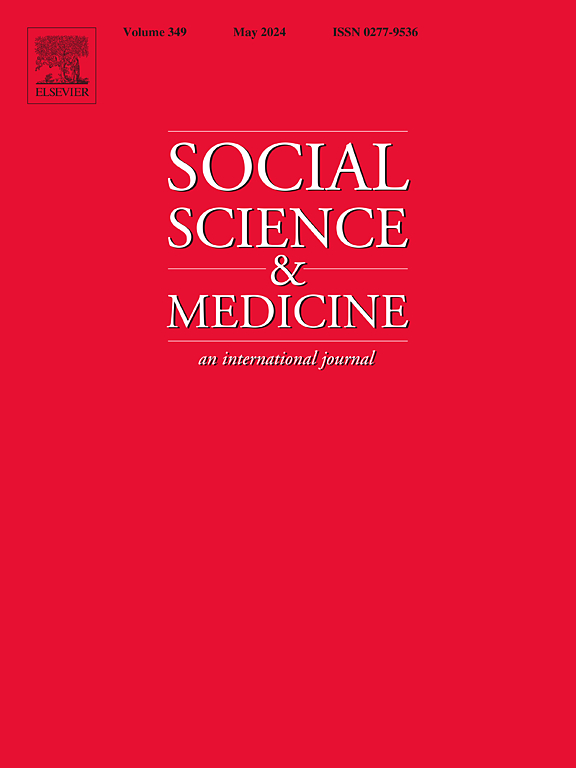Applying CFIR to assess multi-level barriers to PrEP delivery in rural South Africa: Processes, gaps and opportunities for service delivery of current and future PrEP modalities
IF 4.9
2区 医学
Q1 PUBLIC, ENVIRONMENTAL & OCCUPATIONAL HEALTH
引用次数: 0
Abstract
Despite established efficacy for oral pre-exposure prophylaxis (PrEP) in reducing HIV incidence, multi-level barriers within the health system, clinics, and the processes that shape practice have hindered service delivery and subsequent population-level effects. We applied the Consolidated Framework for Implementation Research (CFIR) to assess the context of PrEP delivery for adolescent girls and young women (AGYW) in rural South Africa and identify the factors supporting and impeding PrEP implementation to develop strategies to improve PrEP delivery. Between 2021 and 2022, we conducted in-depth interviews with five young women with PrEP use experience and 11 healthcare providers as well as four key informant stakeholder interviews. Tailored interviews organized around the CFIR domains provided multiple perspectives on the inter-connected processes, gaps, and opportunities between health systems, clinics, communities, and PrEP services. Shifts in PrEP policies, funding pressures, and inconsistent communications from the National Department of Health spurred fragmented planning, engagement, execution, and monitoring of PrEP delivery processes within clinics already struggling to address multiple population health needs. Resulting challenges included: conflicting priorities within clinics and across NGO partners, unclear goals and targets, staffing and space constraints, and insufficient community engagement. Individual clinics’ implementation climate and readiness to deliver PrEP varied in terms of operational plans and delivery models. Interviewees reported complexity of initiation procedures and support for PrEP maintenance, with opportunities to improve systems communications and processes to facilitate integrated services and more user-friendly experiences. Applying CFIR identified opportunities to strengthen PrEP delivery across levels within this complex service delivery setting.
应用 CFIR 评估南非农村地区提供 PrEP 的多层次障碍:为当前和未来 PrEP 模式提供服务的过程、差距和机遇。
尽管口服暴露前预防疗法(PrEP)在降低艾滋病发病率方面具有公认的疗效,但卫生系统、诊所和实践过程中存在的多层次障碍阻碍了服务的提供以及随后在人群中产生的影响。我们采用实施研究综合框架(CFIR)来评估南非农村地区为少女和年轻女性(AGYW)提供 PrEP 的情况,并确定支持和阻碍 PrEP 实施的因素,从而制定改善 PrEP 实施的策略。2021 年至 2022 年期间,我们对 5 名有 PrEP 使用经验的年轻女性和 11 名医疗服务提供者进行了深入访谈,并对 4 名利益相关者进行了关键信息访谈。围绕 CFIR 领域组织的定制访谈为医疗系统、诊所、社区和 PrEP 服务之间相互关联的流程、差距和机遇提供了多种视角。PrEP 政策的转变、资金压力以及来自国家卫生部的不一致沟通,导致诊所内 PrEP 服务的规划、参与、执行和监督过程变得支离破碎,诊所已经在努力满足多种人群健康需求。由此带来的挑战包括:诊所内部和非政府组织合作伙伴之间的优先事项相互冲突、目标和指标不明确、人员和空间限制以及社区参与不足。各诊所的实施氛围和提供 PrEP 的准备情况在运营计划和提供模式方面各不相同。受访者表示,启动程序和对 PrEP 维护的支持都很复杂,有机会改善系统沟通和流程,以促进综合服务和更方便用户的体验。应用 CFIR 发现了在这种复杂的服务提供环境中加强各级 PrEP 服务提供的机会。
本文章由计算机程序翻译,如有差异,请以英文原文为准。
求助全文
约1分钟内获得全文
求助全文
来源期刊

Social Science & Medicine
PUBLIC, ENVIRONMENTAL & OCCUPATIONAL HEALTH-
CiteScore
9.10
自引率
5.60%
发文量
762
审稿时长
38 days
期刊介绍:
Social Science & Medicine provides an international and interdisciplinary forum for the dissemination of social science research on health. We publish original research articles (both empirical and theoretical), reviews, position papers and commentaries on health issues, to inform current research, policy and practice in all areas of common interest to social scientists, health practitioners, and policy makers. The journal publishes material relevant to any aspect of health from a wide range of social science disciplines (anthropology, economics, epidemiology, geography, policy, psychology, and sociology), and material relevant to the social sciences from any of the professions concerned with physical and mental health, health care, clinical practice, and health policy and organization. We encourage material which is of general interest to an international readership.
 求助内容:
求助内容: 应助结果提醒方式:
应助结果提醒方式:


